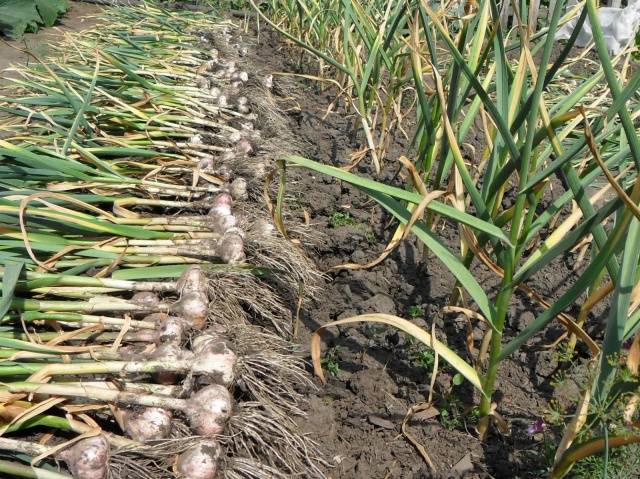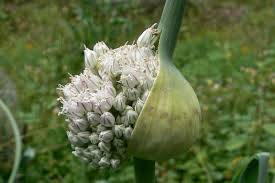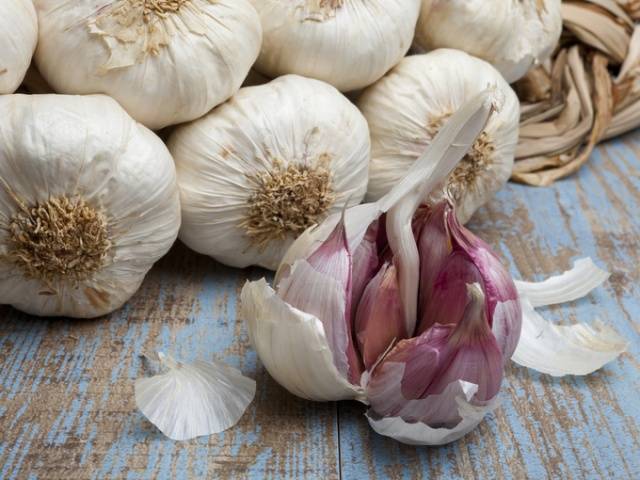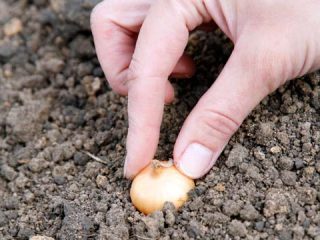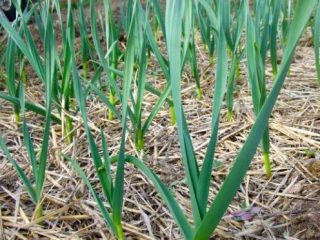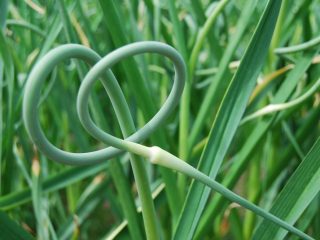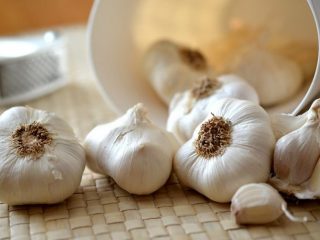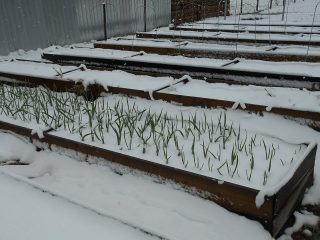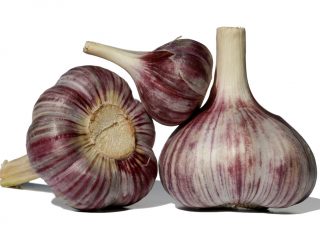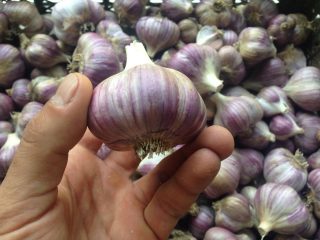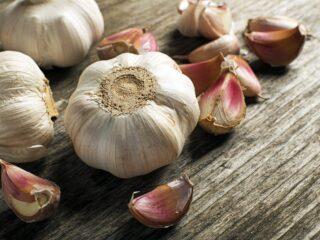Content
How well and how long it will be stored directly depends on when the garlic is harvested. It is often difficult to guess the timing of harvest, because garlic ripens precisely at the time when there is the most work in the garden. But it is very important not to miss this important point, so that all the work is not in vain and the fruits are well preserved until the next harvest. Below you will see when dig up garlic in the Moscow region and how to do it correctly.
When to Harvest Garlic
Harvesting garlic directly depends on the weather conditions of the region, time and method of planting. The period of fruit ripening in different regions is approximately the same. But still, in some areas spring comes earlier, in others, on the contrary, it comes later. This determines when active growth of the bulbs begins.
Weather conditions are also of great importance. In moderately warm climates, the heads ripen faster, and harvesting can begin at the end of July. If the summer turns out to be rainy with sudden changes in temperature, then you may have to dig up the bulbs ahead of schedule and leave them to dry in a dry room.
Also, a lot depends on the type of garlic:
- Winter garlic (or winter garlic) is planted in the garden in the fall. Already in the spring the heads will be fully ripe, and it will be possible to take away from the garden.Usually, such garlic is very large and high-yielding. It is distinguished by its erect and tall stems.
- Summer or spring garlic planted in early spring. Already in summer, the bulbs can be collected. This type is not as big, but can be stored much longer.
As you can see, there are many factors that determine the harvest time of the bulbs. In order to do this on time, all these points must be taken into account.
When to harvest winter garlic
Winter garlic is fully ripened by mid-July. In regions with a temperate climate, the heads must be removed from the beds a week before the end of the month. In the Moscow region, this period may last a little longer, but no more than a week.
When to dig up spring garlic
This type naturally takes longer to mature than the winter variety. It is necessary to dig up spring garlic 2 weeks later than its early “relative”. This time usually falls at the end of August. In colder climates, the heads are dug only in September. Of course, everything depends on weather conditions. Harvest dates may vary slightly each year. Due to frequent rains, garlic can ripen even in mid-September.
How to determine the full ripeness of garlic
Experienced gardeners can easily determine the degree of fruit ripeness by appearance. A sign that the fruits are already ripe will be yellowing and drooping lower leaves. If such a phenomenon is observed towards the end of July, then this, of course, indicates the ripeness of the fruit. If you notice dry leaves in the midst of the growing season, then most likely the garlic is sick or needs watering.
You can also determine the ripeness of the fruits by the arrows that form on the plants around mid-June. So that garlic directs all its forces to the growth of fruits, such arrows It is customary to break it out. But still, you can leave a couple of pieces, by which we will determine whether the fruits are ripe or not. Ripe garlic has a hard and straight arrow. The seed pod at the top should crack and the seeds should appear outward. It is during this period that the bulbs are dug up.
In this case, it is necessary to monitor the leaves and stems. In ripe garlic they dry out and fall to the ground. Now you can check the maturity of the bulb by digging one out of the soil. If it is fully ripe, you will know it by the following signs:
- dense and hard head;
- scales are arranged in at least 3 layers;
- easily detachable teeth;
- The film can be easily removed from the teeth.
It is very important to collect the bulbs on time. Otherwise, the heads may crack and expose the teeth. Such fruits are poorly stored fresh. In addition, they are not suitable for planting next year.
Harvesting and storage
A month before harvest, you should stop watering the plants. And in 7 days it would be good to dig up the ground a little near the bulbs. Thus, the heads will ripen faster. It is necessary to harvest fruits from the garden on a warm day.
The collection process consists of the following stages:
- The fruits are dug up using a pitchfork or shovel. It is not recommended to pull out the bulbs yourself, as this can damage the teeth.
- After this, remove the remaining soil from the bulbs with your hands. Under no circumstances should you shake or beat garlic on the ground.
- The dug up garlic is laid out in rows for further drying. In this form, the bulbs should remain in the garden for at least 4 days.
- Now you can trim the dry stems and leaves.
Some gardeners prefer to immediately put the bulbs in a special room and only dry them there. In this way, you can protect the crop from sunburn and unexpected rains. True, the heads will dry out a little longer indoors than in the fresh air. In this case, the garlic will dry out in about 2 weeks. After complete drying, the fruits should be trimmed and sorted by size.
Some people weave bundles of bulbs and store them in a hanging state. Others place the heads in cardboard boxes and leave them in a dry room. To create better conditions, you can layer the heads with parchment. The best storage option is wicker baskets. Fresh air easily enters them, so the bulbs can be stored longer.
Winter varieties are best stored in a cellar or refrigerator. Such conditions will slightly extend its shelf life. Spring garlic is stored better; even in a warm room it will not lose its properties.
Conclusion
As we have seen, it is important not only to grow strong bulbs, but also to dig them up in time. The ripening time for garlic in the Moscow region may vary depending on the variety and weather conditions. It is very important to monitor the appearance of plants. It is he who will tell you that it is time to harvest. It is also very important to store the dug heads correctly. By following all the rules described above, you can extend the shelf life of the heads until the next harvest.

